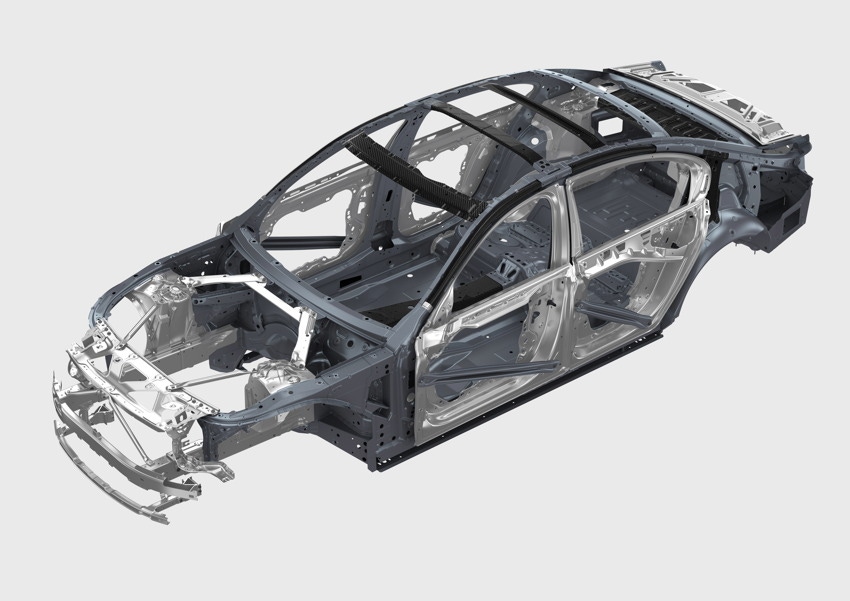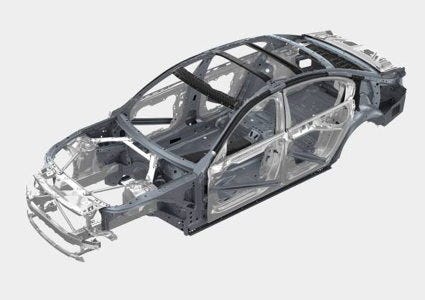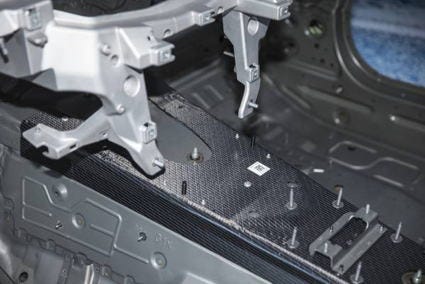Extensive use of carbon-fiber-reinforced plastic (CFRP) in the structure of the passenger cell, of the new BMW 7 Series means the line-up will tip the scales up to 130 kg lighter than the outgoing generation of models.
April 20, 2015

Extensive use of carbon-fiber-reinforced plastic (CFRP) in the structure of the passenger cell, of the new BMW 7 Series means the line-up will tip the scales up to 130 kg lighter than the outgoing generation of models.
At the heart of the series is a body structure with a “Carbon Core” based on the transfer of technology from the development of the BMW i hybrid models. The use of CFRP – whose material properties lend themselves to use in the passenger cell areas exposed to heavy loads – increases torsional rigidity and strength. The configuration of the sheet metal elements can be adjusted accordingly, allowing body weight to be significantly reduced according to BMW.
 New 7 Series features extensive use of CFRP.
New 7 Series features extensive use of CFRP. The next generation BMW 7 Series also features the iDrive operating system with a touch display. This means users will also be able to operate the system in the same way as modern electronic devices. Another new addition to the iDrive system’s functionality is BMW gesture control, which is being introduced for the first time. Hand movements detected by a 3D sensor control infotainment functions in an extremely intuitive and user-friendly fashion. The gestures can be used for a number of functions, including controlling the volume in audio applications and accepting or rejecting incoming telephone calls. There is also the option of pairing a specific gesture with an individual choice of function.
The next generation BMW 7 Series also features the iDrive operating system with a touch display. This means users will also be able to operate the system in the same way as modern electronic devices. Another new addition to the iDrive system’s functionality is BMW gesture control, which is being introduced for the first time. Hand movements detected by a 3D sensor control infotainment functions in an extremely intuitive and user-friendly fashion. The gestures can be used for a number of functions, including controlling the volume in audio applications and accepting or rejecting incoming telephone calls. There is also the option of pairing a specific gesture with an individual choice of function.
You May Also Like


